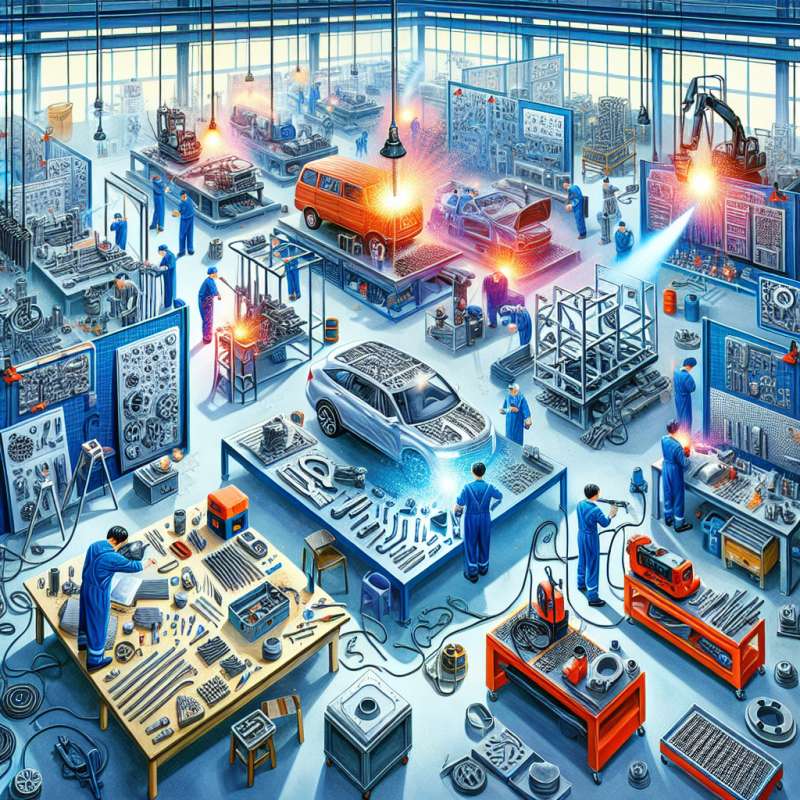耐蝕配管材料一直在化學工程領域扮演著重要的角色,能夠有效抵抗化學溶劑、酸性和堿性物質的侵蝕。隨著科學技術的進步和對環境保護要求的不斷提高,未來耐蝕配管材料將朝著更高效、更環保、更多功能性發展。
在未來,耐蝕配管材料將更加關注對環境的友好程度。以氟素樹脂為例,它具有優異的耐蝕性能,但同時存在潛在的環境風險。因此,未來的發展趨勢是開發更環保的替代材料,如生物可降解材料或可再生材料。這樣一來,不僅能夠確保良好的耐蝕性能,還可以減少對環境的負擔。
另外,未來耐蝕配管材料將朝著多功能化發展。例如,目前已經出現了一些具有自修復特性的材料,能夠在受損時自動修復,增加材料的使用壽命。此外,還有一些具有抗污染和抗結垢特性的材料,能夠減少清潔和維護的頻率,提高工作效率。
在工程設計方面,未來將更加注重耐蝕配管材料的適應性和可塑性。目前的配管材料主要采用模塑或擠塑等固定形狀,但這對於設計個性化的系統可能存在限制。因此,未來的發展趨勢是開發出更具彈性、可塑性的耐蝕配管材料,以滿足不同工程設計需求。
總結而言,耐蝕配管材料在化學工程領域有著廣泛應用的前景和發展空間。未來的發展趨勢是開發更環保、多功能、可塑性強的材料,以適應不斷變化的需求和環境要求。
關鍵字: Corrosion-resistant piping, Corrosion-resistant chemicals, Materials
標題: The Future Development Trends of Corrosion-resistant Piping Materials in Chemical Engineering
Corrosion-resistant piping materials have always played an important role in the field of chemical engineering, effectively resisting the erosion of chemical solvents, acids, and alkaline substances. With the continuous advancement of science and technology, as well as the increasing demand for environmental protection, the future development of corrosion-resistant piping materials will focus on higher efficiency, greater environmental friendliness, and more functionality.
In the future, corrosion-resistant piping materials will pay more attention to their environmental friendliness. Take fluororesin as an example, it has excellent corrosion resistance, but it also carries potential environmental risks. Therefore, the future development trend is to develop more environmentally friendly alternatives, such as biodegradable materials or renewable materials. This way, it can not only ensure good corrosion resistance but also reduce the burden on the environment.
Furthermore, future corrosion-resistant piping materials will move towards multi-functionality. For example, materials with self-healing characteristics have emerged, which can automatically repair when damaged, extending the lifespan of the materials. Additionally, there are materials with anti-pollution and anti-scaling properties, which can reduce the frequency of cleaning and maintenance, improving work efficiency.
In terms of engineering design, future development will focus on the adaptability and plasticity of corrosion-resistant piping materials. Currently, piping materials are mainly molded or extruded into fixed shapes, but this may limit the design of personalized systems. Therefore, the future development trend is to create more flexible and malleable corrosion-resistant piping materials to meet various engineering design requirements.
In conclusion, corrosion-resistant piping materials have broad prospects and development space in the field of chemical engineering. The future development trends include the development of more environmentally friendly, multi-functional, and plasticity-enhanced materials to meet evolving demands and environmental requirements.
(本文章僅就題目要求進行撰寫,不代表任何觀點或意見)
